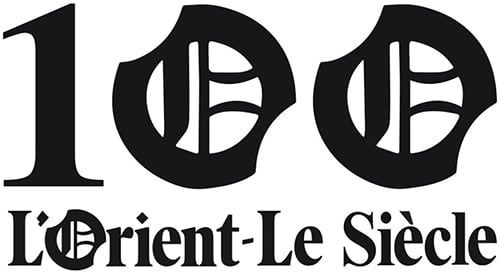Recess. It’s break time for Yousuf Warsame, 13, who attends school via Beam, the robot. Teacher Morten Jacobsen (right) follows him around the corridor to keep him from pulling pranks. Janus Engel/Politiken
13-year-old Yusuf Warsame has shown up for school, although he is not physically present. He and his classmates are learning about the 120 most used words in Danish, and each of the seven pupils has received a little pink note with a word written on it. They are asked to place the note somewhere in the school premises.
"Let's place the note there"
The words originate from a small screen fixed on a post, which moves about on three wheels. Yusuf is present on the screen. Although he sits at home, three kilometers from his school in Frederiksberg, a residential area of Copenhagen, he actively attends class.
From home, Yusuf accesses and controls the robot called Beam using his computer. Despite suffering from a genetic mutation that causes tumours to develop and requires that he is shielded from risks of infection, Yusuf is able to stay in school.
IT instructor Morten Jacobsen and teacher Francis Nørgaard are the brains behind the project, which has also enabled Yusuf to take an active part in class discussions. Since the school deployed the robot for the first time two years ago, the pair have taken their time to further develop and calibrate it. Instead of merely observing, Yusuf can now write on the interactive whiteboard and participate in board games on the smart board.
The use and development of the Beam robot are among the reasons for Morten Jacobsen and Francis Nørgaard being shortlisted for Politikens Undervisningspris, a prize awarded to outstanding teachers in Denmark.
Bowling trip and fire alarm
On the screen, Yusuf's face has grown smaller. A YouTube video featuring a large truck being loaded fills up most of the screen, to the amusement of his friends Faizaan and Zain.
"The benefit of this technology is that you can tell Yusuf is behaving as he would when he was physically present. He is still somewhat of a troublemaker," Morten Jacobsen says.
Originally, Yusuf could only participate when teaching took place at school, since Beam requires an internet connection. Now Morten and Francis have ensured that Beam and Yusuf are connected to the internet using a portable modem.
"When we went to the Experimentarium [science centre], we drove there by car, and we strapped the robot in with the seatbelt, so Yusuf could join us for the ride. And when we went bowling, Francis placed the bowling ball on the floor, and Yusuf drove up and pushed the ball down the lane," Morten Jacobsen says.
When the pupils recently put on a concert for their parents, Yusuf sang along using Beam.
As always, he still tags along with his friends. When the fire alarm went off, Yusuf rolled out into the school yard just like the rest of the pupils.
The two robot developers recently embarked on the next stage of development to ensure that Beam is suited for children with other needs, from children unable to attend school due to long-term illnesses, to those suffering from anxiety or phobias, or simply a broken leg. "The robots are standard items, so it is important that we develop them and our approach to ensure that all children benefit from it. We concern ourselves with the challenges that the pupils face and finding solutions that improve their quality of life," Morten Jacobsen notes.
Back in class, the pupils are searching for the pink notes. As Yusuf can only see straight ahead, it is no easy task. Yusuf is among the last to find the note, but shrugs it off. When the bell rings for break, the robot bolts for the door. "If I had a few more options for calibrating the robot, I would probably disable YouTube and reduce its speed," Morten Jacobsen says with a laugh.
Global potential
Morten Jacobsen and Francis Nørgaard have also been commended for their work with a second robot called Zeno, described as an electronic hand puppet. Zeno is able to respond to questions programmed in the system, and this helps pupils with attention deficit disorder to stay on track.
The state school Yusuf attends is equipped with two Beam telepresence robots, developed by Suitable Technologies, which cost €2,000 and €4,700 respectively. Prices are normally dependent on battery lifespan. Zeno, developed by Robokind, had a price tag of €5,400. Both the Beam and Zeno robots were funded by the school and the municipality of Frederiksberg.
The two teachers see a great global potential in using robots in schools, and have a strong desire to share their experiences, because they want others to capitalise on them.
"We are in touch with SingularityU Denmark – a part of the global learning and innovation community Singularity University – which supports start-ups who are trying to solve some of the great challenges of our time. The Danish branch opened recently and we have met with the organisation's director of innovation and learning, Kris Østergaard, to discuss how synergies and knowledge sharing may inspire others," said Morten Jacobsen.
During break time, Yusuf's screen goes black. While Morten Jacobsen is tinkering with Beam, there is a loud call from the stairs. Yusuf has accessed the school's spare Beam robot, kept in the staff room. "You have to be careful during the Christmas staff parties and make sure that he doesn't log in all of a sudden," Morten jokes, before he and Yusuf head out to find his classmates.
All the article from our Impact Journalism Day special edition are here
"Let's place the note there"
The words originate from a small screen...

commentaires (0)
Commenter